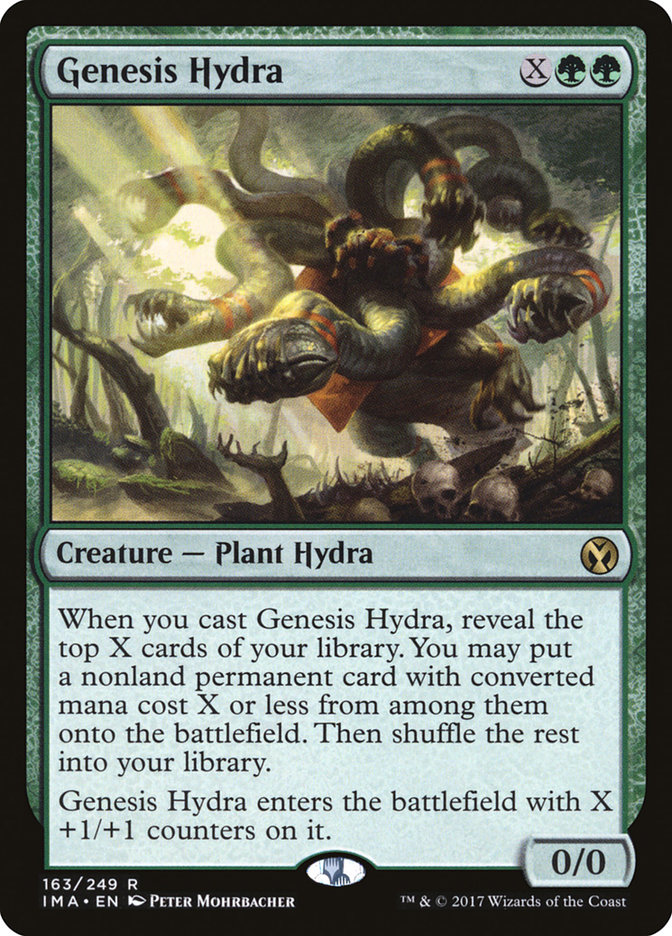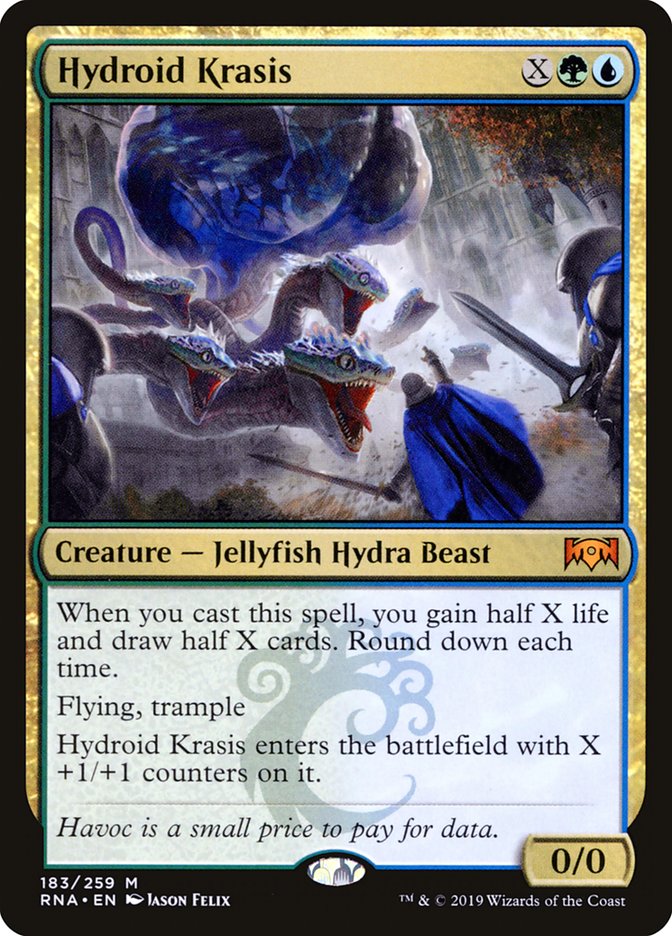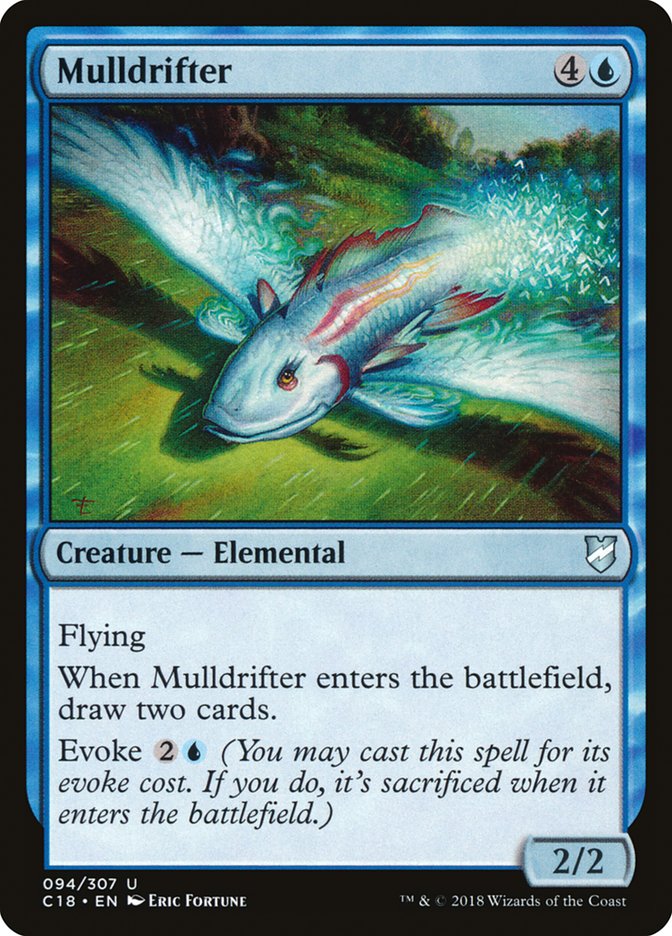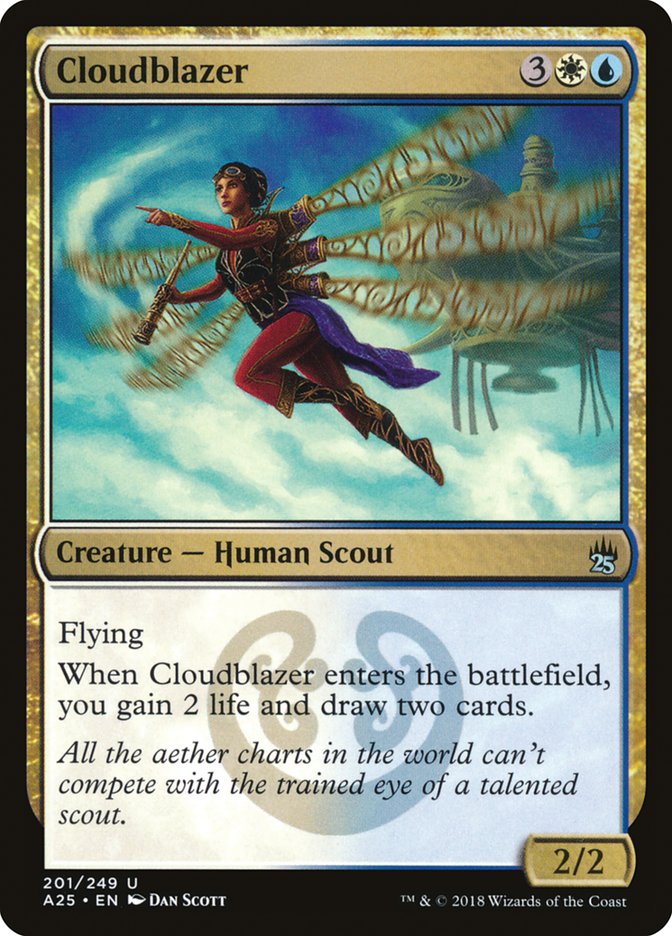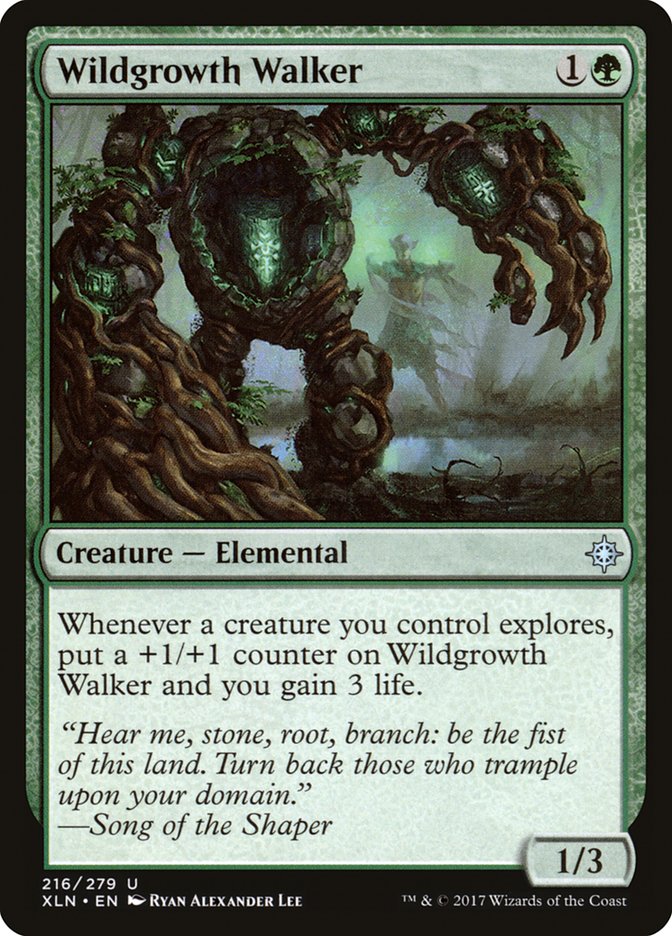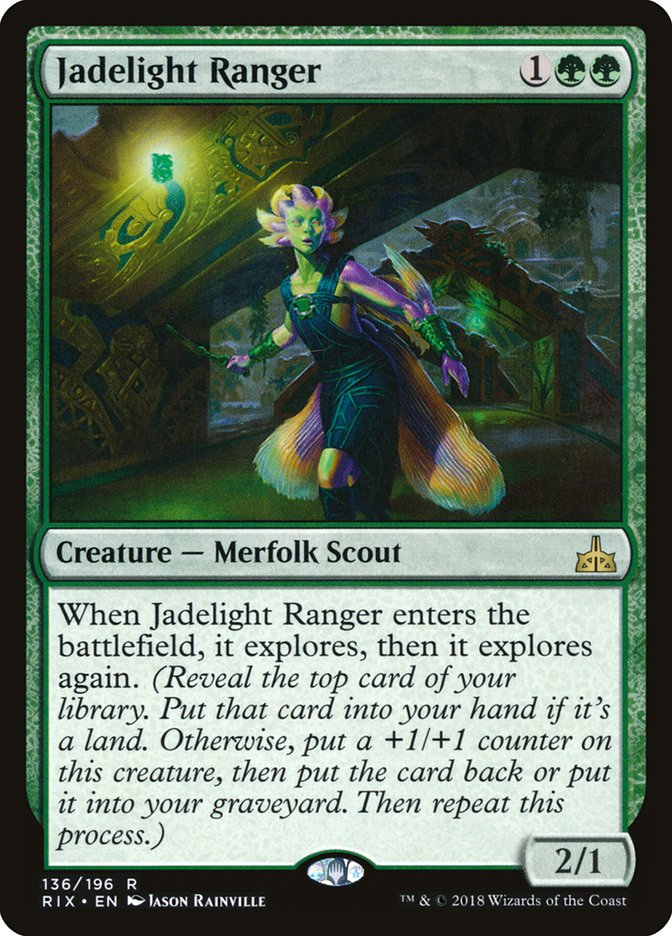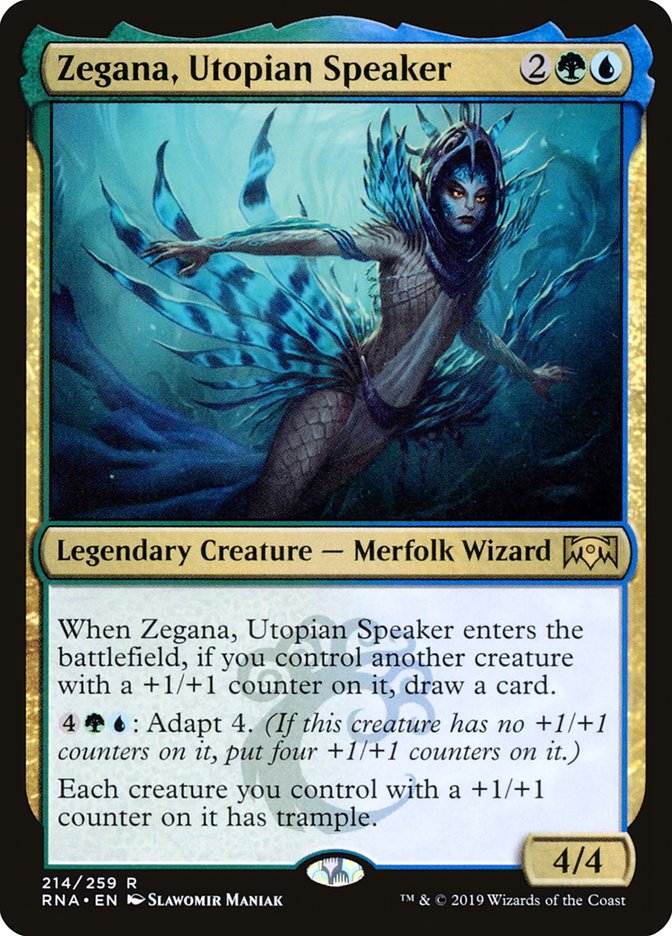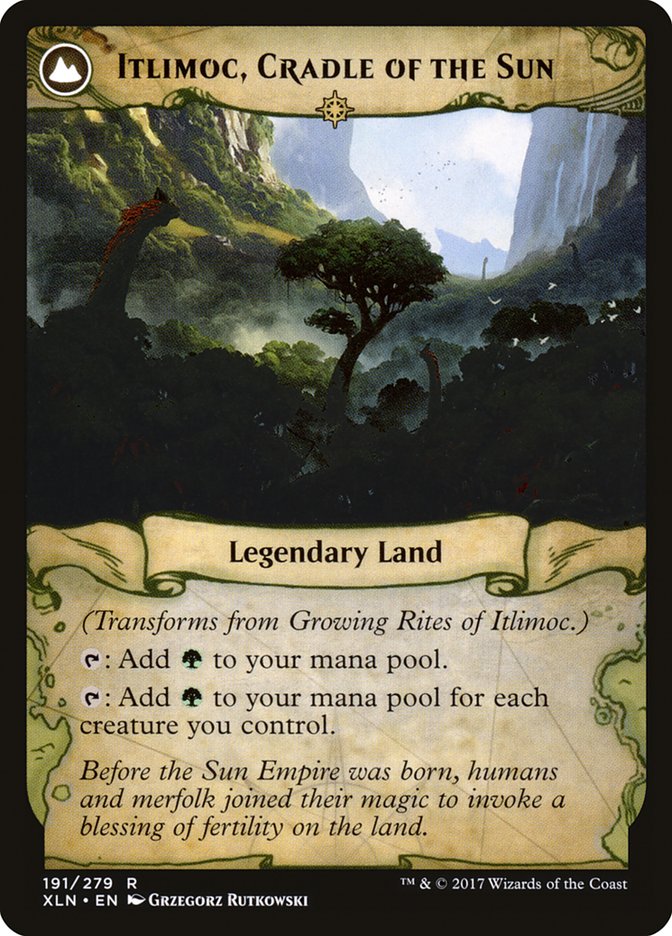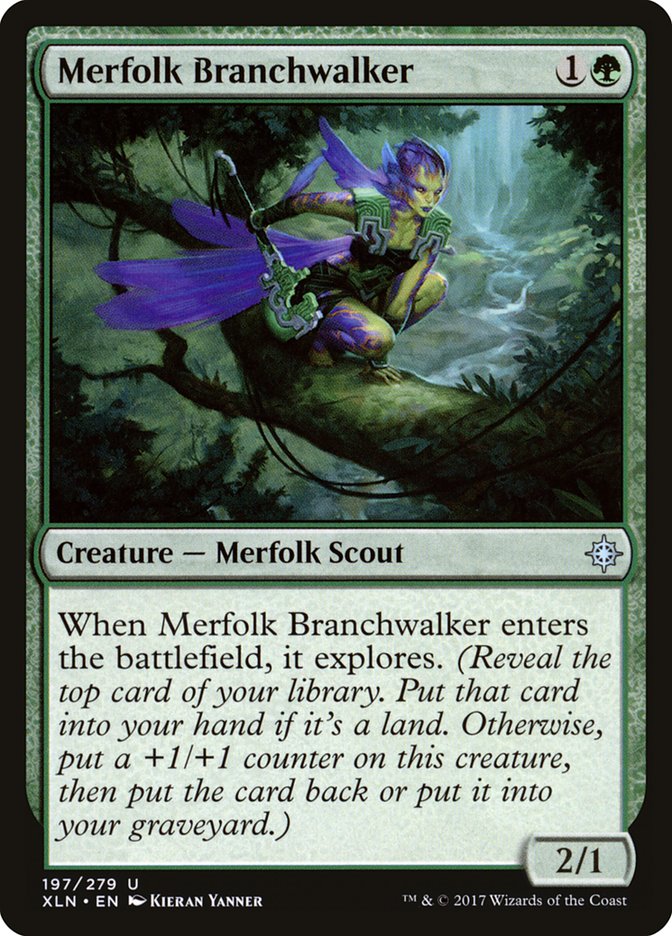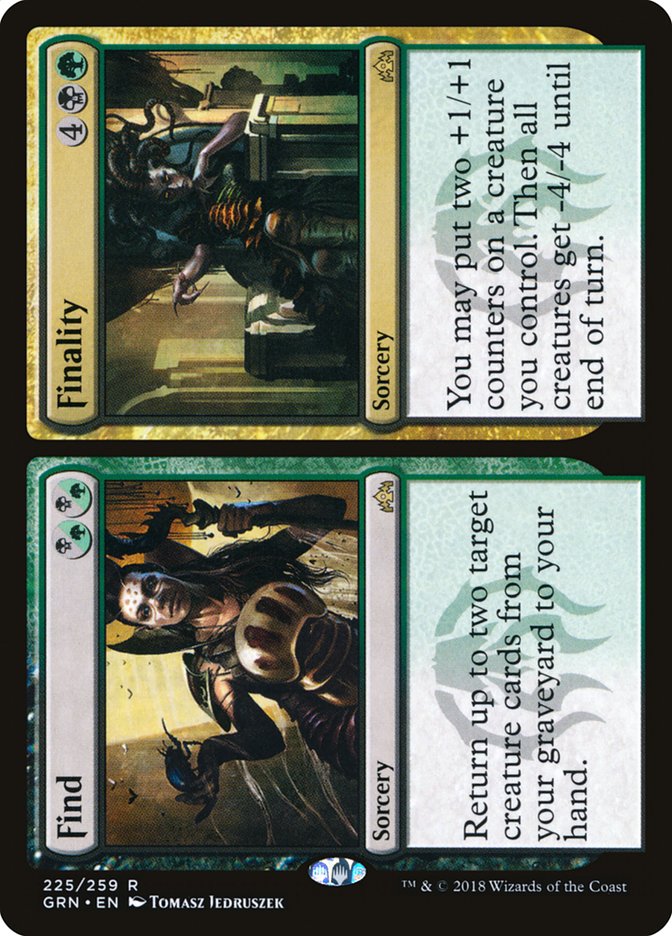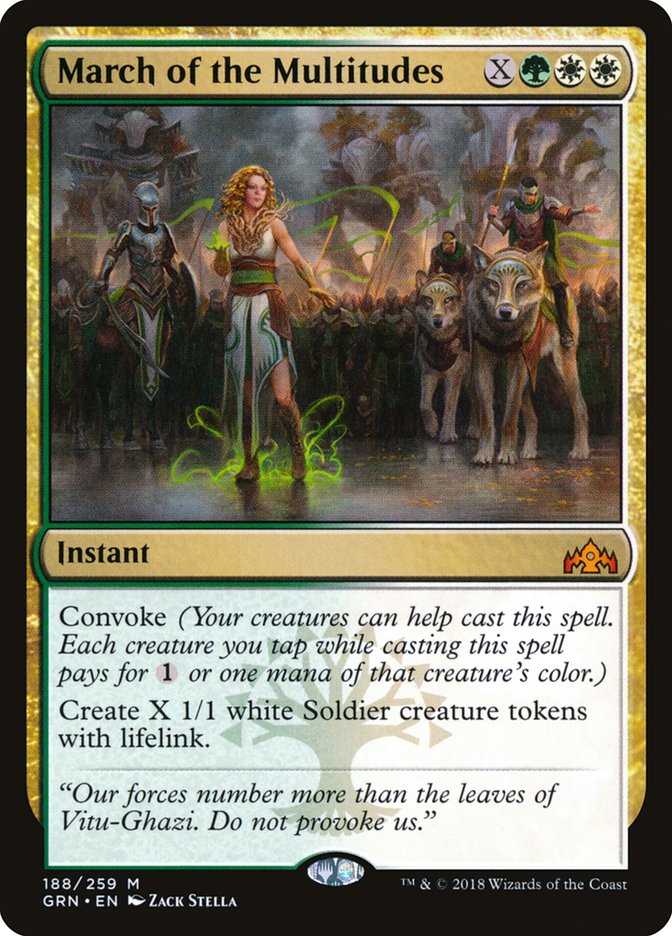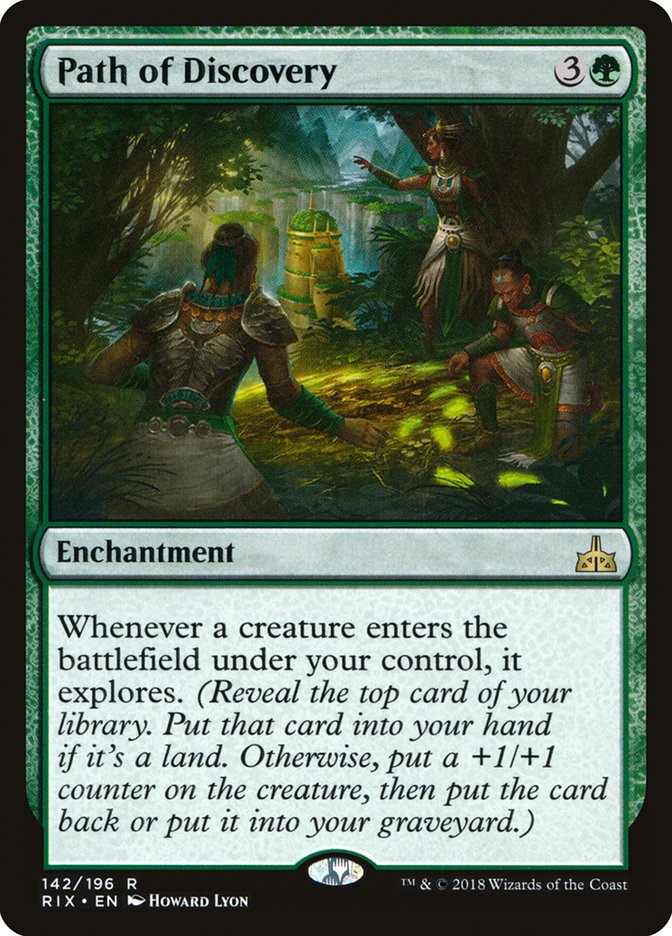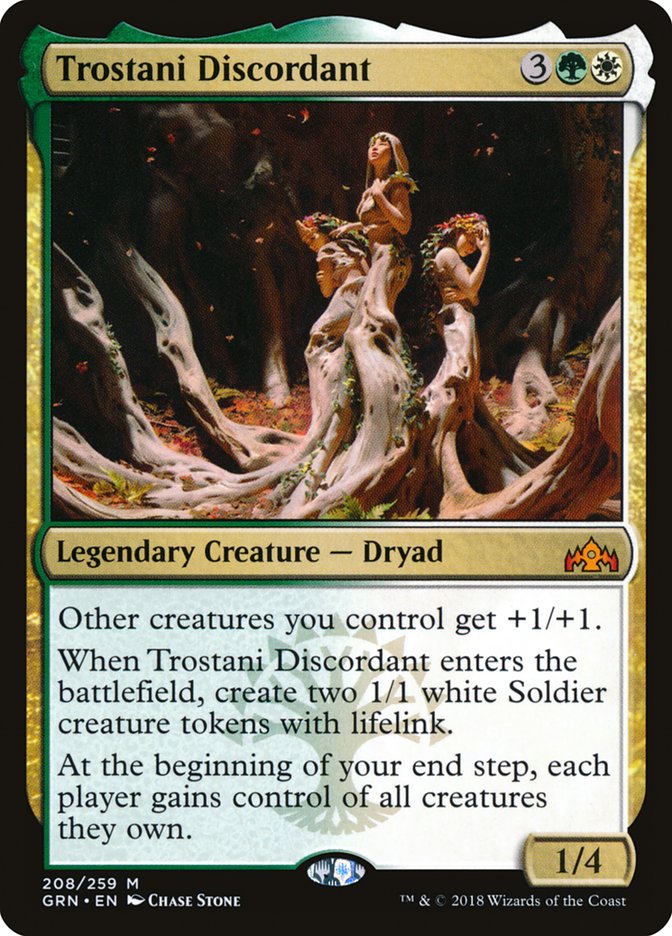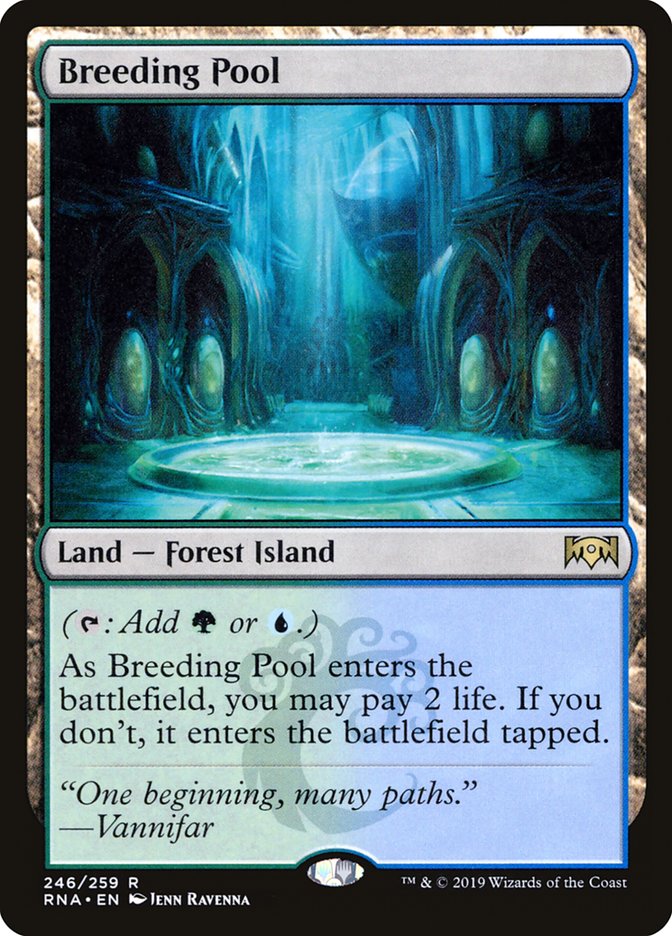One of my favorite Standard cards in recent memory is Genesis Hydra. The
cast trigger made investing so much mana into a large monster desirable, as
you got some worthwhile effect even if your opponent was a scaredy-cat
boring draw-go counterspell player. In the past, these cast triggers were
mostly on giant Eldrazi, a reward for investing so much mana. And even if
your opponent did use their big brain to cast Cancel, you’d still punish
them quite a bit.
Genesis Hydra had a particularly strong ability because it helped generate
a bit of tempo along the way. Sinking a bunch of mana into Genesis Hydra
usually found the card you needed to stabilize or push ahead. Against
control, finding a Nissa, Worldwaker was backbreaking. Against other
creature-based decks, finding a Polukranos, World Eater would mean
dominating the ground for the rest of the game. And if you’re casting a big
Genesis Hydra, odds are that you have enough mana to put Polukranos, World
Eater to good use.
I bring up Genesis Hydra because of the card I’m going over this week in
great detail. The similarities are obvious:
I’m not going to read the card off to you. You have eyeballs, and you
understand how the game of Magic works. There’s a lot of text to go over,
but I’ll give you a second to familiarize yourself with Hydroid Krasis. I
read it three times to make sure I knew what all it did, and I’m fairly
certain I’m going to need to read it again to get it right.
Go ahead. Take your time. Ready?
I’ve heard a lot of differing opinions about Hydroid Krasis already, and it
was previewed about three hours ago as of time of writing. Some people have
said it’s a bad Mulldrifter. Rounding down isn’t something we see very
often, and cutting abilities in half makes it a little more complicated.
I’ve seen people compare it to Cloudblazer. People are trying to see how it
matches up against the other top-end finishers in the format, but it seems
like everyone is failing to realize that X spells are notoriously good only
because of their versatility. The sacrifice is that they’re weaker in the
early turns as a result but completely bonkers if you draw them later in
the game.
Additionally, X spells are going to reward you if you build your deck
geared towards hitting land drops. And since the explore mechanic helps you
hit your land drops while also supplying you with a proven engine, it
shouldn’t be too difficult to complete the shell. After you figure out the
core, the rest of the deck is up to you.
Creatures (26)
- 4 Llanowar Elves
- 2 Shapers of Nature
- 4 Wildgrowth Walker
- 4 Merfolk Branchwalker
- 4 Jadelight Ranger
- 4 Zegana, Utopian Speaker
- 4 Hydroid Krasis
Planeswalkers (3)
Lands (23)
Spells (8)
Sideboard

The engine, of course, is Wildgrowth Walker and Jadelight Ranger. This
combination gives you an early defensive threat that could potentially get
out of control. And when you start to combine these cards with the synergy
of Simic, specifically +1/+1 counters, things can get a little bit
ridiculous.
The weird part is that we haven’t even seen what Simic can really do yet.
Zegana, Utopian Speaker is a big part of this strategy at the moment, but
the full potential hasn’t been unlocked yet. But what I do know is that
giving Wildgrowth Walker trample is a pretty big deal, and a big body that
draws a card for four mana and has a bunch more abilities is
pretty ridiculous.
This style of deck is going to suffer from a lack of spot removal, but this
color combination has basically always had that problem. Aside from the
occasional bounce spell or Rabid Hybridization, your only way to interact
with creatures is usually going to involve counterspells. At the moment, I
don’t think this is a big problem, as there aren’t a lot of creatures that
say “kill this or you lose the game.” Most creatures in Standard are
virtually invincible or have some value attached to them entering the
battlefield (or dying). When cards like Ravenous Chupacabra aren’t
particularly format-defining, and most decks are creature-based, you must
understand that traditional spot removal isn’t particularly good. If you’re
going to play a removal spell, you need it to do something bonkers, cheap,
or versatile.
As for the viability of this particular archetype, we’re going to have to
wait and see just what the rest of Ravnica Allegiance has to
offer. I’ve always been a pretty big fan of the Simic Combine, but the hard
truth is that it completely revolves around synergy, and we’re going to
need a few more cards before we start to see the shape of Simic in
Standard.
One thing about this deck I quite like is that it seems to have a great
outlet for utilizing Growing Rites of Itlimoc. Gaea’s Cradle is a
particularly strong Magic card, and I’m surprised that no one has really
found a good home for this card. Sure, the trigger on the front side is a
bit weak for the casting cost but transforming it has never seemed all that
difficult. The trick was finding a way to easily transform it while also
giving yourself a way to use all that extra mana. Hydroid Krasis is perfect
for this role, but I wouldn’t be surprised to see Shapers of Nature ending
up a stable in this style of deck.
Moving on, I’d like to look at splashing Hydroid Krasis in already-existing
archetypes. The lifegain and card draw abilities seem particularly
desirable in a deck that is currently touted as the format’s dominant
archetype.
Creatures (25)
- 4 Llanowar Elves
- 2 Carnage Tyrant
- 4 Wildgrowth Walker
- 4 Merfolk Branchwalker
- 1 Seekers' Squire
- 4 Jadelight Ranger
- 2 Ravenous Chupacabra
- 4 Hydroid Krasis
Planeswalkers (3)
Lands (25)
Spells (8)

Golgari Midrange might not need the help to get better, but chances are
things are going to change dramatically with Ravnica Allegiance.
Everyone now has complete access to three-color manabases, which will
ultimately increase the overall power level of the format. The sacrifice
will be dealing yourself a bit of damage via shocklands or having the
occasional land enter the battlefield tapped at the wrong time. Both
instances reward players who are low to the ground, aggressive, and
consistent. But if you aren’t going lower to the ground, you need to be
going way over the top, and Hydroid Krasis is perfect for this slot.
What I like most about Hydroid Krasis in this build is that it’s solid at
multiple different casting costs. For four mana, getting a 2/2 flier that
draws a card and gains a life can help you hit your fifth land drop or
trade off with some small creature from the opponent for a bit of value.
And while a mini-Mulldrifter might not be good enough by itself, the
ability to get it a lot bigger and have a much bigger effect as the game
goes is great.
This Golgari shell, ultimately just splashing for Hydroid Krasis and
sideboard counterspells, is particularly good at playing to the long game.
Cards like Wildgrowth Walker gain some early life points to stem the
bleeding against aggro, allowing you to hit your land drops and get to your
mid- and late-game. Even speed bumps like Jadelight Ranger and Merfolk
Branchwalker help you fix your draw while giving you some pressure or
offering trades in the early turns. And once you get to the lategame, your
more powerful cards start to shine.
I love that Find//Finality is particularly good alongside Hydroid Krasis.
Being a creature with such a powerful effect means you can cast Hydroid
Krasis a bit more liberally in the early portions of the game because
you’ll eventually be able to get it back and cast it again.
One major concern I have for this archetype is the manabase. Sure, the mana
can work, and you can probably figure out the best combination of lands to
mix together, but the downside of having a land enter the battlefield
tapped at the wrong time is devastating. Additionally, if your opponent can
kill your Wildgrowth Walker before you gain life, it’s possible that
dealing yourself too much damage with Breeding Pool and Watery Grave will
have grave side effects in your aggro matchup.
There’s such a thing as your manabase being “too good,” in that you can
play far too many dual lands than are necessary. Figuring out how to build
the mana is just as important as why you’re splashing another color in the
first place. In this instance, I think we need one or two more reasons to
play blue, but it might also mean we need to trim back on the double black
costs, which would ultimately change the deck entirely.
Lastly, I wanted to try out an archetype that didn’t get a lot of love in
the previous Standard format, though it had some early success on Magic
Online. It doesn’t hurt that it certainly feels like it fits into this
shell perfectly.
Creatures (26)
- 4 Llanowar Elves
- 2 Druid of the Cowl
- 4 Wildgrowth Walker
- 4 Merfolk Branchwalker
- 4 Jadelight Ranger
- 4 Trostani Discordant
- 4 Hydroid Krasis
Lands (24)
Spells (10)
Sideboard

This combination has long been something I’ve been fond of, though it is a
bit clunky. Luckily, two of these spells are just fine on their own! Again,
we’re just barely splashing blue, but we’re also just barely splashing
white. So that starts to make things a bit weird when it comes to building
your manabase.
I don’t think this is a true Hydroid Krasis deck, but it certainly can
utilize Hydroid Krasis in positive ways. As a green deck, flying is not
something you have too much access to. Additionally, drawing raw cards is a
bit better than hitting a bunch of lands with Jadelight Ranger.
My goal for Hydroid Krasis, at least at the beginning, is to make sure we
can hit land drops and utilize the body. However, there’s a good chance
that splashing Hydroid Krasis into a non-green deck will end up being a
better fit for it. Not all decks have good ways to draw cards or gain life,
so having a big body with a unique effect is quite powerful. The trick for
Hydroid Krasis will be finding the shell that needs both sides of the
effect the most or goes way over the top with mana generation. With Genesis
Hydra, we had Nykthos, Shrine to Nyx. As of right now, we don’t have
anything all too similar for Hydroid Krasis, but we might not be looking
hard enough. Growing Rites of Itlamoc/Itlimoc, Cradle of the Sun might be
the perfect card for this shell, but it will take some time to figure
everything out.
With the Simic mechanic being adapt, a mana sink, figuring out ways to
generate a ton of mana will be the most important part of building a Simic
strategy. It’s also possible that we’ll be able to build two or three
different cores for Simic in the new Standard format. After all, we have
quite a few Merfolk from Ixalan running around, and Zegana,
Utopian Speaker just so happens to be a Merfolk as well. There could be
something there, but I’m hesitant. I’ve been trying to build a Merfolk deck
in Standard for the last year and change, but it’s been nearly impossible.
But now with Breeding Pool…
I just want to be clear: We have very few cards of the Simic Combine
previewed thus far, and I’m already flush with ideas on where to start.
Cards like Hydroid Krasis give me inspiration. And I can’t wait to see what
else is in store. Like Golgari and Izzet before it, I just hope that the
Simic Combine, and the decks we build around them, will be customizable,
ever changing to attack the top archetypes of the day. I want the option to
be fairly aggressive via Merfolk while also having a build that ramps with
Growth Spiral into some very large Ape Lizard Mutants.
The previous Standard format was awesome. I’m still playing it on Arena.
I’m very likely going to go play some more Arena right after I submit this
article to Cedric. And I have very high hopes that Ravnica Allegiance will continue this glorious new era of insanely
fun Standard formats.


